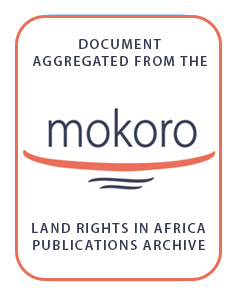Existing land governance system in Zimbabwe subjects vulnerable groups such as women to ‘land corruption’, which entrenches the already existing gendered land inequalities. This study used secondary data and found that Zimbabwe has witnessed various forms of corruption in general and land…
The Zimbabwean dairy industry is massively underperforming, as evidenced by a reduction in milk yield from 262 million liters in 1990 to <37 million liters in 2009 and a steady but slow increase to 82 million liters in 2021. The current demand for milk in Zimbabwe stands at 130 million…
This factsheet gives answers on how climate exacerbates root causes of conflict in Zimbabwe, using an impact pathway analysis. Two main impact pathways are identified: 1) Food insecurity and competition over access and use of natural resources; 2) Water scarcity and conflict in Bulawayo andâ…
In most sub-Saharan African countries, staple cereal grains harbor many fungi and some produce mycotoxins that negatively impact health and trade. Maize and three small grain cereals (sorghum, pearl millet, and finger millet) produced by smallholder farmers in Zimbabwe during 2016 and 2017 were…
This detailed timeline provides further background information on the history and land governance of Zimbabwe summarised in the Land Portal country profile.
National parks play an important role in maintaining natural ecosystems which are important sources of income and livelihood sustenance. Most national parks in Southern Africa are managed by their states. Before 2007, Gonarezhou National Park was managed by the Zimbabwe Parks Management and…
Executive Summary
Violence has spiked in Zimbabwe’s gold mining sector, costing hundreds of people their lives and triggering a police operation that led to the arrest of thousands. Media and government blame artisanal miners, who dig using little mechanisation and often without licences…
The study reviews the land policy in Zimbabwe and investigates the extent to which the policy provides incentives for investment and technology adoption to increase labour productivity in the agricultural sector. The research is based on a desk study of relevant literature and land policies…
ABSTRACT Urban land in Zimbabwe is a lucrative economic and thus political asset. Increased demand for urban land across the country has been driven by multiple factors including high rates of urbanization, increased rural-urban migration, urban population growth and serious challenges in…
Advances in Global Navigation Satellite Systems (GNSS) have revolutionized the geospatial industry around the globe. Recently, the Government of Zimbabwe realized the need to adopt GNSS- Continuously Operating Reference Stations (CORS) for boundary mapping of farms to ensure security of tenure.…
An agreement between the Zimbabwean Government and the Commercial Farmers Union on compensation for land taken from white farmers was finally agreed on 29 July 2020;20 years after the land reform programme began. There had been previous attempts;but the science of asset valuation is far from…
Pressures on land and natural resources are growing;and many communities affected by land rights violations struggle to assert their rights. In this interview Rachael Knight talks about how IIED’s legal tools team supports grassroots advocates and communities impacted by large-scale land…




